Introduction
The CW50 is a 50 mile single loop around the beautiful Chiltern countryside. Runners must reach the finish within 13 hours to be elgible for awards. There are further cut offs on route.
Course and Trail Conditions
The race route consists of a single 50 mile loop through the Chiltern Hills. Starting and finishing in the riverside village of Goring On Thames, It begins by heading down the 'hilliest' section of the Thames Path National Trail to Whitchurch, before joining the Chiltern Way to Mapledurham. From there it is a short 4 mile section through to Sonning Common, before runners get in to some of the best climbs, descents, valleys and villages that the Chilterns have to offer. Travelling first through Bix, runners then pay a visit to Turville and climb steeply out of the village directly past Cobstone Windmill. It's on and down through rolling countryside from there to the Ibstone check point. Runners then continue on the Chiltern Way to the highest point on the course at Christmas Common (800ft), before a fast descent underneath Watlington Hill, to join the Ridgeway as far as Swyncombe Farm aid station. Runners then take the Chiltern Way extension first east, then west to rejoin the Ridgeway at Nuffield. From there it's Grim's Ditch until the final aid station and the turn for home on one of the fastest sections of the course.
The route has 5600 feet of climb, and 5600 feet of descent.
Runners will meet at Goring Village Hall between 0700 and 0840 on race day. There will be a race briefing at 0840 and the race will start at 0900 from the road adjacent. Final Cut Off is at 2200.
Rules
All rules are at the final discretion of the race management team. No challenges will be permitted.
1. There will be no unofficial runners. Unofficial runners will be banned from taking part in future Centurion events.
2. Each runners bib number must be worn on the front of the body and must be easily visible at all times.
3. Runners must follow the marked trail/ course at all times. Any runner caught deliberately cutting the course will be immediately disqualified.
4. Each runner must complete the entire course under his or her own power.
5. Runners may not store supplies of any kind along the trail.
6. Each runner must be checked IN to all aid stations. DO NOT RUN PAST WITHOUT HAVING YOUR NUMBER TAKEN. You will be disqualified if you are not registered together with your time at every aid station.
7. Cut-off times will be strictly enforced. There are cut offs at EVERY aid station. Runners reaching the finish after the final cut off will not be listed as official finishers and will not be eligible for awards.
8. In addition to medical information provided by the runner during the online registration process, runners must fully disclose at race registration, changes to existing medical conditions and all prescription medications being taken.
9. Runners compete in this event entirely at their own risk including but not limited to road crossings and all other hazards of the trail. There will be a full waiver to sign at registration. Runners refusing to sign the waiver will not be permitted to start.
10. Littering of any kind will result in immediate disqualification. Littering will threaten our use of the trails and the future of the race.
11. Any runner who is unable to finish the race must personally inform the aid station captain of the nearest checkpoint of his decision to withdraw. HE OR SHE MUST HAND IN HIS RACE NUMBER TO THE AID STATION CAPTAIN AT THAT TIME. This serves as official notice of a runner’s withdrawal from the race. Runners who leave the course without turning in their number will be classified as “lost,” initiating serach and rescue, for which the runner may be charged.
12. Runners are responsible for the actions of their crews. If your crew are deemed to have broken any of the runner race rules or separate rules for crews, the runner will be held accountable. Your crew act on YOUR behalf and based on YOUR instructions.
13. Minimum Entry Age in accordance with the UK Athletics permitting is 18 years of age.
14. Pacers are not permitted at any stage of the run.
15. Runners must carry the following mandatory equipment at all times. There are many options regards kit for fulfilling these requirements and those of other events. We stock what we believe to be the best options at our online store available by clicking here under the Mandatory Gear Section. Please ask us if you have any questions.
- Fully Charged Mobile Phone including the numbers for the Race Medic and Race Director (on the number you have given at registration)
- Water Bottles/Bladder capable of carrying a minimum of 1 litre.
- Survival Blanket: 1.4m x 2m minimum
- Waterproof Jacket: Gore-tex or similar, minimum 10000mm+ & must have sealed seams.
- Whistle
- Headtorch or Primary Light Source (Minimum 75 lumens)
- Back Up Light Source (Minimum 25 lumens)
- The race is cupless which means you must bring a cup with you. Soft cups are available at the store here.
16. There will be mandatory gear checks at the start, on route, or at the finish. Failure to comply with the gear checks will result in disqualification.
17. Runners are not to be accompanied by dogs at any time whilst on course.
The footpaths, bridleways and roads on the course are used by, but not limited to, horse riders, walkers and mountain bikers. Please be aware of other people whilst you are running and be as polite and courteous as possible to them, making way when necessary, particularly to horses. You do not have priority over any other users out on the course, most will be totally unaware of the event taking place.
RULE VIOLATION PROCEDURE
Any protests to a ruling or of a runner to runner violation must be submitted by a registered entrant and must be lodged using the following procedure:
1. Report the alleged violation to the runner or his/her crew as the incident occurs. Enlist a fellow witness to the alleged violation if possible.
2. Report the alleged violation with the runner’s name and number to the next available aid station staff.
3. Report the alleged violation in writing at the finish line to the race director. All protests must be submitted by 6pm on Monday following the race. Written protest must include the name of the person who lodged the complaint.
4. Decision on all violations and rules is at the final discretion of the Race Management ONLY. There will be no challenges after that decision.
Support Crews
Crews are in no way essential at this event, we look after you with fully stocked aid stations, medical support and plenty of volunteers to help you on your way. However, having a crew can provide a psychological lift and ensure that you have the food and drink you prefer and changes of clothing along the way.
A separate tab for crew accessible locations is available by clicking here.
Crews must follow all of the rules and regulations of the race, including the Rules, Rules for Crews and any supplementary instructions issued in pre-race memos or at the race briefing. All crew members must willingly comply with all instructions from race staff at all points along the trail and its access routes, including parking regulations, or risk disqualification of their runner.
The runner is directly responsible for all of the actions of his or her crew throughout the duration of the event.
RULES FOR CREWS
A crew member is defined as any individual who provides material support to a runner during the event.
Crews may meet runners or assist them ONLY at the points listed on the crew instructions page here. The aid station locations and many other points on the course are remote and often too small to handle ANY additional parking. If your crew do assist you outside of the permitted points, you the runner will be disqualified. PLEASE ensure your crew do not break this rule - you will threaten the future of the race by doing so. YOU are responsible for the actions of your crew. We cannot make this any clearer, if your crew attend anywhere outside areas deemed as permitted crew access, you risk disqualification from the event. We get people every year who are fully aware of the rules and continue to disobey them. It threatens the future of the event so please ask them not to do it.
Crews must always drive at safe speeds.
Crews must never park illegally on the road, or in such a way as to block traffic, access to the trail or checkpoint, or other parked cars.
Littering of any kind at any checkpoint, along the trail, or at the finish line is strictly prohibited.
NOTES FOR CREWS
A daypack can be helpful in transporting supplies to your runner.
Crews should be equipped with torches and first aid kits.
As the day progresses, crews should take care of themselves as well as they take care of their runners. Adequate hydration, regular meals and appropriate clothing will keep crew members happier, stronger and focused on the needs of their runner.
RUNNERS WILL BE HELD RESPONSIBLE FOR THE ACTIONS OF THEIR CREWS AND PACERS
Medical
The Chiltern Wonderland 50 is an extremely challenging event and participation presents numerous medical risks, many of which can be extremely serious or fatal.
Participation in this event is at the runner’s own risk. Although medical personnel are positioned at various points along the course, the inaccessibility of much of the trail will make it difficult or impossible for medical assistance to reach the runner immediately.
Medical support at the race is under the direction of the Race Medical Director who’s details to be used in an emergency will be made available to all runners at registration, further to that of the Race Director.
The medical team on site for the weekend is provided by GB Emergency Medical Services. At any one time during the race there will be at least one roving team out on the course. There will also be a static medical team at the FInish.
It is important for each entrant to recognise the potential physical and mental stresses, which may evolve from participation in the race. Runners may be subject to extremes of heat, cold, hypothermia, hyperthermia, dehydration, hypoglycemia, hyponatremia, disorientation and mental and physical exhaustion. We and the medical staff strive to work with runners and will do all we reasonably can to ensure “safe passage” to the finish line, but ultimately runners must understand their own limitations. Adequate physical and mental conditioning prior to the race is mandatory. If you have not been able to prepare properly, do not attempt to run. Runners entering an ultra distance trail event must understand that the trail is at times remote and access via anything other than on foot is not possible. You must be capable of self sufficiency.
Runners should appreciate the risks associated with participation in this event. Actions may have to be taken on your behalf under extreme time constraints and adverse circumstances. We will make every effort to give assistance whenever possible but ultimately and primarily you are in charge, and you are likely to be solely responsible for creating your own crisis that we must then respond to. Be careful, be responsible, and do not exceed your own abilities and limitations. IN THE EVENT THAT A RUNNER REQUIRES EMERGENCY EVACUATION, THE RUNNER ASSUMES ALL FINANCIAL OBLIGATIONS CONNECTED WITH THIS SERVICE. CENTURION RUNNING AND GB EMERGENCY MEDICAL SERVICES ARE NOT RESPONSIBLE FOR ANY DEBTS INCURRED. Runners should have adequate insurance in place to cover those eventualities.
Some of the main risks, but certainly not all of them, are listed here. These should be understood and remembered by all runners, before and during the event. Please note that death can result from several of the risk conditions discussed below.
1. Renal Shutdown: Renal shutdown occurs from muscle tissue injury which causes the release of myoglobin, a protein material, into the blood plasma. Myoglobin is cleared from the blood stream by the kidneys and will look brownish-colored in the urine. Adequate hydration will help flush myoglobin through the kidneys. Overwhelming amounts of myoglobin may clog the filtering system of the kidneys either partially or totally. If not treated, renal shutdown can cause permanent impairment of kidney function. IT IS CRUCIAL TO CONTINUE HYDRATING USING ELECTROLYTE FLUIDS DURING THE FINAL HOURS OF THE RUN AND FOR SEVERAL HOURS/ DAYS FOLLOWING THE RUN OR UNTIL THE URINE IS LIGHT YELLOW AND OF NORMAL FREQUENCY. There is extensive research to support the claim that NSAIDs (ie. ibuprofen/ paracetemol etc) greatly increase a runners chances of reaching a stage of renal shutdown. We will not provide Ibuprofen or paracetemol at any aid station and you are strongly advised not to take it during or immediately after the run. More information on this subject can be obtained by contacting the race director.
2. Effects of Cold/Hypothermia: Temperatures in September in the UK are very variable ranging from on average between 10 degrees C and 18 degrees C. With wet conditions and/or moderate to high winds runners will be open to exposure during the event. Hypothermia is a serious risk when runners energy reserves have been depleted from up to 13 or more hours of running. Hypothermia can strike very quickly, particularly when pace slows from exhaustion or injury. The initial warning signs of hypothermia often include lethargy, disorientation and confusion. The runner will feel very cold with uncontrolled shivering and may become confused, unaware of the surroundings, and may possibly be an immediate danger to his or herself. Staying well-nourished, adequately hydrated and appropriately clothed will help avoid hypothermia.
3. Risks Associated with Low Sodium and Chloride Counts: Low sodium levels (hyponatremia) in ultramarathon runners have been associated with severe illness requiring hospitalisation. It is important for long-distance athletes to use fluids or eat foods containing electrolytes/ salt to replace the water and salts lost during exercise. WATER INTAKE ALONE IS NOT SUFFICIENT, as water intoxication and possibly death may result. This problem may in fact worsen after the Race, as the non-electrolyte-containing fluid which has been accumulating in the stomach is absorbed. Potassium and calcium replacement may also be important, although these levels change less with fluid loss and replenishment. Signs and symptoms of hyponatremia include; weight gain, bloating, nausea, vomiting, headache, confusion, lack of coordination, dizziness, muscle twitching/cramping and fatigue. If left untreated, it may progress to seizures, pulmonary and cerebral edema, coma and death. There are two ways to put oneself at risk of hyponatremia; 1) over-hydration (with water or even electrolyte-containing sports drinks) and 2) replacing sweat with hypotonic fluids. Risks of hyponatremia include weight gain and low sweat rate.
Risks of hyponatremia can be minimised by eating salted foods a few days prior to the race, matching fluid and electrolyte intake to sweat losses and monitoring weight. The best way to achieve proper electrolyte and fluid balance is to hydrate with fluids containing proper amounts of electrolytes and to replace with sodium-containing foods or supplements, if required, and as determined during your training. Electrolyte fluids should be consumed for a good period (a few hours) after the race. Once the gut is working and adequate hydration has occurred, the normal balance of thirst, hunger, digestion and kidney filtration will maintain the proper balance of fluids and electrolytes. Water or dilute sports drinks should be consumed only after the onset of urination.
4. Vehicle Hazards: There are three areas on the course where runners must be watchful for vehicles. Road crossings are marshalled.
5. Use of Drugs: No drugs of any kind should be taken before, during or immediately after the race.
7. Injuries from Falling: Falling is an ever-present danger on trails, with potentially serious consequences. Much of the trail is narrow, uneven and rutted and some sections are very steep. The course may be covered with sitting water, snow or ice which will create significant challenges and potential hazards to runners.
8. Overuse Injuries: Obviously, innumerable overuse injuries can occur, especially in the knee and the ankle. Sprains and fractures can easily occur on the trails. Blisters may also halt progress.
9. Common Fatigue: One of the dangers you will encounter is fatigue. Fatigue, combined with the effects of dehydration, hypothermia, hyperthermia, hyponatremia, hypoglycemia and other debilitating conditions can produce disorientation and irrationality.
10. Difficulty in Gaining Access to or Locating Injured Participants: Much of the trail is inaccessible by motor vehicle. Accordingly, in spite of the many layers of safety precautions instituted by the race management (including radio communications, sweepers, foot patrols and other emergency services and medical personnel at many checkpoints), there is absolutely no assurance that aid or rescue assistance will arrive in time to give you effective assistance should you become sick, incapacitated or injured.
What to do in a Medical Emergency:
If there is a problem and you need the Medical Team either to attend or just for advice, call: 07040 900 402 at ANY time during the event.
This will put you through to the Event Medical Team Leader who will co-ordinate any response and/or give advice, Our team will be happy to talk you through Emergency Aid Procedures on the phone whilst they are on their way to you.
If you are ill/injured or have found someone who is ill/injured and need the medical team to attend your location, we’ll need to know the following:
Your Phone Number (In case we need to call you back)
Where You Are. We’re also able to access Lat/Long if you have a GPS with that capability.
Your name and/or Runner Number and that of the Casualty if Different.
What’s wrong? What do you need the medical team for?
If you are not the casualty, but have found them, please stay with them until help arrives, whilst this may impact on your personal best, at least you’ll have a good excuse
Make the casualty as visible as possible and keep them warm, It is mandatory for each runner to carry a “Foil Blanket” which should be used if you're in any doubt at all.
Do not allow the casualty to move UNLESS they are in an unsafe position, e.g. in the middle of a busy road and there is no other option.
Do not give the casualty anything to eat or drink until the medical team arrive as they may require surgery or medical procedures at hospital and food/drink will delay this being able to happen.
Be ready to flag down the Medical Team when they are close by.
The phone used to call the Medical Team must remain with the casualty until the medical team arrives, if we’re having difficulty finding you, we will call you back.
Calling 999
General Rule: If the Casualty is NOT BREATHING, is likely to STOP BREATHING imminently, call 999 for the Ambulance Service, then the Event Medical Team (We ask that you call both because we may be close by and can assist until the 999 Service Arrives), for all other Injuries/Illnesses, call the Event Medical Team on the above number FIRST and we’ll take it from there.
If you just need advice, give the Medical Team a call on the number above, or speak to one of the marshalls.
Non-Medical Risks and Dangers
There are other significant risks to runners during the race which do not fall under the medical category. The major ones are listed here and all runners should be aware of these prior to race day.
1. Social Hazards. The course makes its way through remote sections of trail. There is always the opportunity for undesirable characters to be on or around the trail and the chance that they may cause trouble for runners. Runners who want to listen to music should use headphones should be aware of their surroundings at all times on the trail.
2. Road Crossings. There are numerous road crossings and sections of the trail that travel along roads. Some of the key crossings will be marshalled, however it is the runners responsibility to cross/ navigate all roads safely, whether marshalled or unmarshalled. You the runner must be alert and aware at all times when emerging on to roads. We advise all runners to recce the route prior to race day.
3. Getting lost. Race staff and the volunteers do their best to provide a marked trail, but it is necessary for runners to continually remain alert as they travel.
Aid Stations
These type of running events survive because of the incredible volunteers who work the aid stations. Without them there would be no race.
The aid stations are well stocked with fluids and a variety of foods. The fluids that are generally available are Water and Coke. The foods that are generally available are fruit, cookies, chocolate bars, jelly babies, crisps, nuts, a limited number of Gu energy gel packets, sandwiches, wraps etc. There will be hot food at the finish.
The use of Ibuprofen can lead to kidney problems when used in abundance and/or under stressful conditions such as running long distance races. We will not provide these medications at our aid stations. If you feel the need to bring and use your own pain medications or anti-inflammatories, then you are willing to assume the responsibility for their use.
Without the assistance of the volunteers and race medics, there would be no race. Many of these volunteers have spent days preparing for the run and will be out on the course over both Friday and Saturday, assisting runners. They have given up their weekend to insure you the best possible chance of success. Courtesy and sincere thanks from the runners will go a long way to help make their day.
Cut Offs
Cut-off and “pace” times are listed on the Aid Station Chart. Cut-off times reflect the deadlines for LEAVING the aid station. If you return to an aid station after the cut-off, you will be WITHDRAWN from the race. The cut-off times will be strictly enforced by the Aid Station Teams. Anyone leaving an aid station after the cut-off time will be disqualified. This rule is for the safety of all participants. There is NO NEGOTIATION on the cut off times.
Awards
All finishers under the 13 hour cut off will receive a medal and finishers t-shirt.
Runners crossing the finish line after the 13 hour cutoff will not be listed as official finishers and will not be eligible for awards.
Male and Female Race winners will be awarded additional prizes marking their achievement.
Schedule
Saturday 16th September 2017
0700-0840 - Goring Village Hall
- Runner registration and bib collection
- Finish Line Bag deposit open
0840 - Goring Village Hall
- Mandatory race briefing
0900 - Goring Village Hall
- Race start
2200 - Goring Village Hall
- Final Cut off - Race Finish
16-09-2017
16-09-2017
16-09-2017
16-09-2017
16-09-2017
16-09-2017
16-09-2017
16-09-2017
16-09-2017
16-09-2017
16-09-2017
16-09-2017
16-09-2017
16-09-2017















